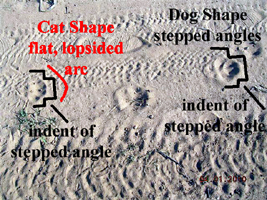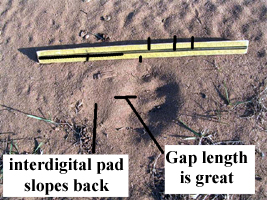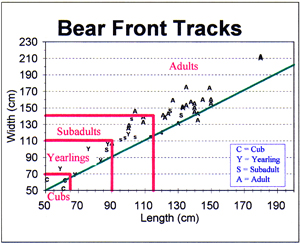P R O D U C T S
Track Scene Investigation
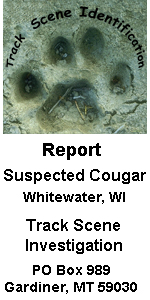 |
Reports Below is a example in the form of an abbreviated report to illustrate what your TSI report may look like. It illustrates the use of various clues to match criteria for species identification. Marked up photos show the search for clues present in field evidence.(Click on the report below to view the PDF). |
||
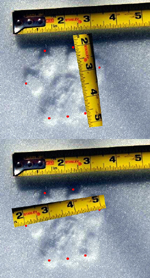 |
Photography, either on film or in digital format, captures details that
even astute observers may missing in their field notes. With modern
photo processing these details may be enhanced to reveal information not
initially apparent. TSI analyses images to match clues to criteria for
identification and behavior in footprints and trails. Below are marked
up photos that expose clues for the natural history detective. |
||
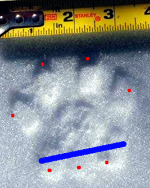 |
Clues may be either qualitative or quatitative. Footprints that appear
similar qualitatively, such as a marten and a fisher, often need accurate
measurements to differentiate. Quality measurements must be made by
minimum outline methods (see techniques section). TSI may make up to 27
different measurements on the footprint of a five-toed animal with claws. |
||
|
Nothing impresses a person more than the "touchy / feely" aspect of
holding a real footprint cast in your hand. Caressing a cast seems to
bring the animal to life in your mind. Sensitive finger tips can often
reveal what the eye does not detect. Photographs of footprints, trails, signs, and track scene investigations are available by contacting Dr. Halfpenny at (406) 848-9458. |
|||
Cougar Footprint Cast |
Wolf Footprint Cast |
Black Bear Footprint Cast | |
|
Dr. Halfpenny has written many books and scientific articles dealing with a range of natural history and ecological subjects. Below is a bibliography of his manuscripts dealing mostly with tracking. Below are covers of many of his works dealing with tracking. For the remainder of his writings go to www.Halfpenny.me. Go to the Publications tab to downolad many of his articles in PDF format. His books may be purchased though www.Tracknature.com. Go to the Books tab. |
|||
Click Here to Dowload PDF of Dr. Jim Halfpenny's Tracking Publications |
|||
